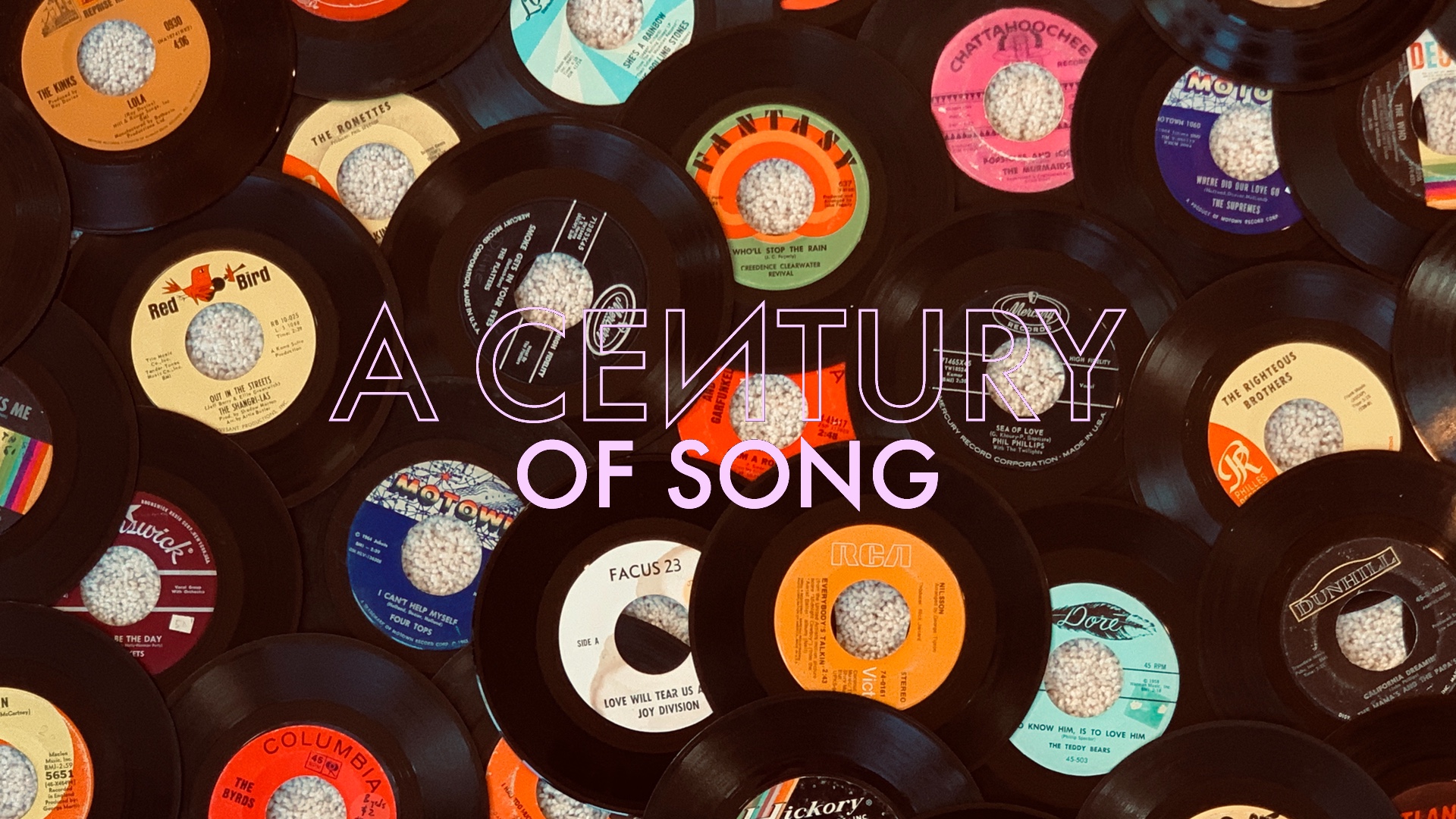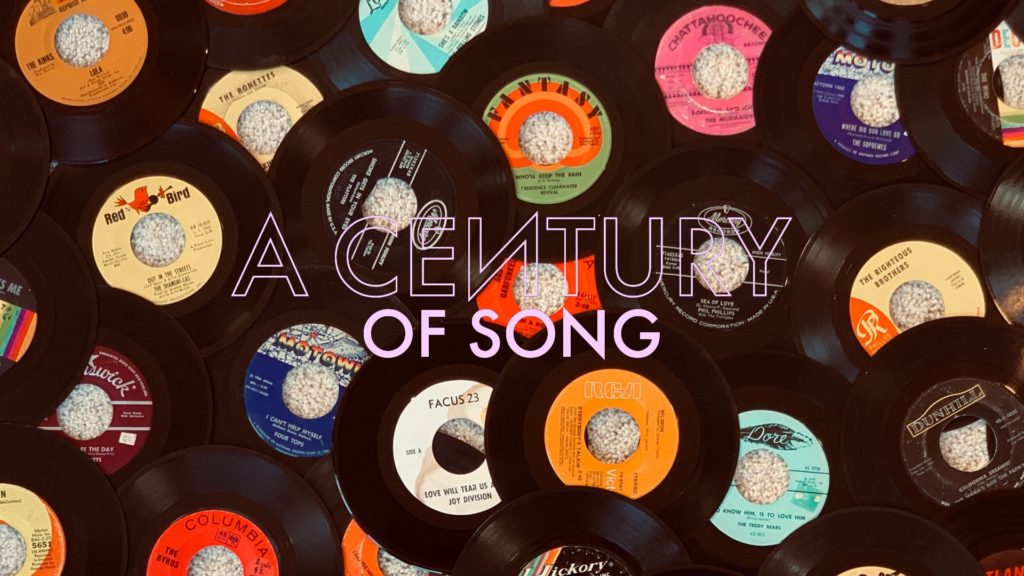
A Century of Song is an attempt to summarize 100 years of popular music through 1000 carefully chosen tracks. Included within this list are landmark singles, stellar album cuts, huge hits, hidden gems, and more than a few personal favorites. Read the introduction for the project here, and enjoy the embedded videos and Spotify playlist.
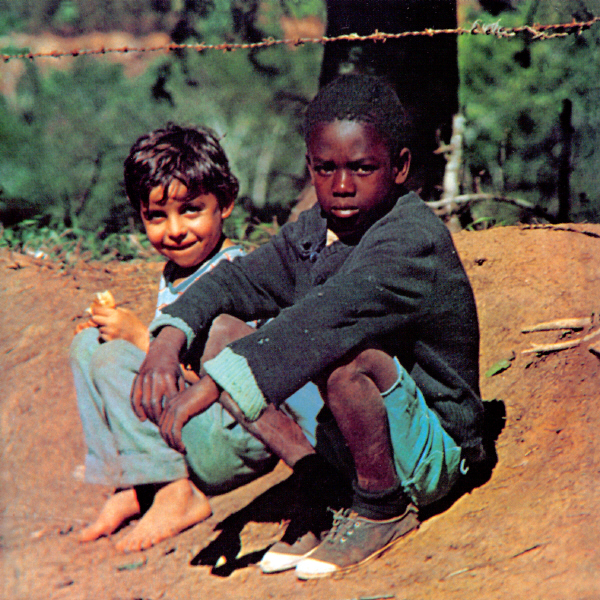
240
Often regarded as the greatest album to ever emerge from Brazil, Milton Nascimento’s 1972 collaboration with Lô Borges, Clube da Esquina, is a masterpiece of lush arrangements and engaging melodies – the peak result of the music and art collective referenced in the record’s title.
Clube da Esquina‘s wholly inviting mood is immediately established in the album’s vivid opener, “Tudo que você podia ser.” While taking a number of cues from the Tropicalistas, Nascimento and company largely avoided the bold experimentation of that scene, but doubled down on its eclectic instrumentation, warm melodic charms, and simultaneous nods to Brazilian tradition and American pop culture. The end result of Clube da Esquina was rarely short of stunning, and “Tudo que você podia ser” was merely one of its many highlights.
The richness of “Tudo que você podia ser” stood in stark contrast to the brutality of the military dictatorship that ruled over Brazil during the peak of the “Música popular brasileira” scene of the early-seventies. Nascimento’s voice is both pleading and commanding, carrying immense emotional weight for those who don’t understand even a word of Portuguese. Combined with the vibrancy of the instrumental backing, it makes for alluring point of entry for a remarkable record.

239
Dismissed by some as little more than a rewrite of their previous hit, “You Really Got Me,” “All Day and All of the Night” was another cutting blast of proto-proto-punk from The Kinks. Paired together, the singles proved that the London group were among the most brazen – and eventually one of the most influential – acts of the so-called British Invasion.
While Ray Davies undoubtedly aimed to capitalize on his initial brush with the pop charts, “All Day and All of the Night” was even heavier and louder than its predecessor. The song represented the most dangerous sound yet from a major British rock group, and it was nearly as successful as “You Really Got Me” on both sides of the Atlantic.
The Kinks would eventually temper their wilder impulses, becoming a group whose ambition and nuance were only eclipsed by The Beatles (in terms of their British contemporaries). However, it was their thrilling initial run that helped to pave the way for the greater artistic triumphs that eventually followed.
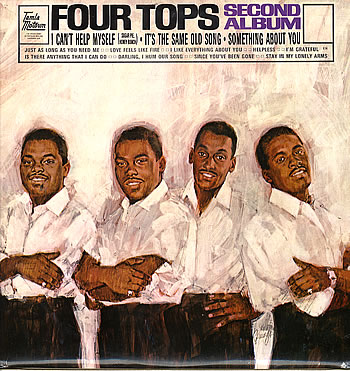
238
It’s hard to believe that Four Tops are only now making their first appearance on this list. Virtually unrivaled among their Motown peers, the group was led by Levi Stubbs – one of the finest vocalists on a scene with no shortage of remarkable competitors. It’s his pleading lead vocals that made “I Can’t Help Myself” a particularly notable single in the middle of one of pop music’s greatest years.
Released in the spring of 1965, “I Can’t Help Myself” hit number one on the American charts that summer – and separately topped the Billboard R&B charts for nine weeks, while fending off notable competition from the likes of labelmates like The Supremes and The Temptations. Stubbs’ performance is countered by one of Motown’s great call and response hooks – a signature of the Holland-Dozier-Holland songwriting team that crafted the track.
Adorned by yet another wonderful example of Lamont Dozier and Brian Holland’s production work, “I Can’t Help Myself” brims with an assuredness that belies the song’s “powerless” lyrical device. The instrumental contributions of Motown’s Funk Brothers give the track a propulsive momentum – one that provides a wonderful juxtaposition to the lush string arrangement of the Detroit Symphony Orchestra.
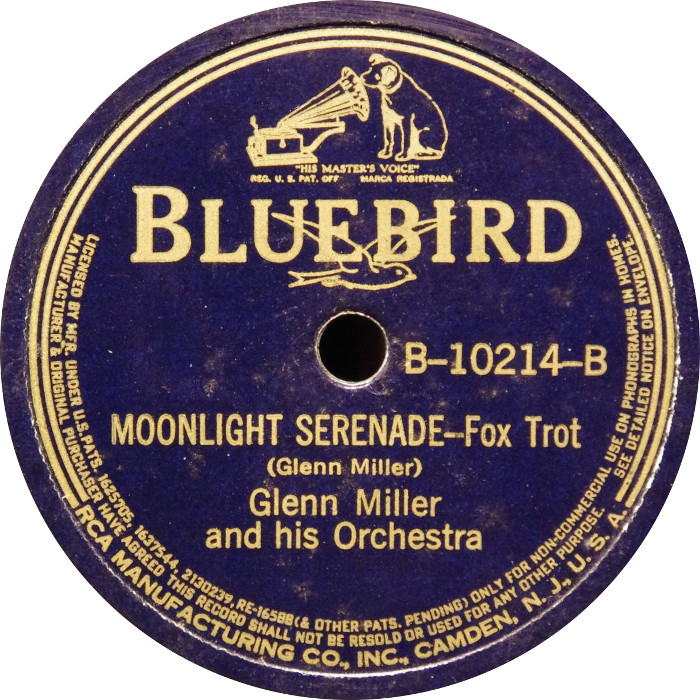
237
Certainly one of the most iconic tracks of the World War II era, “Moonlight Serenade” was a masterful composition by Glenn Miller. Arguably the biggest musical star of the times, Miller’s recordings would eventually become synonymous with the war years, but the best of them – of which “Moonlight Serenade” undoubtedly is one – remain timeless.
There is an elegant sophistication to “Moonlight Serenade” that stands in contrast to the uptempo swing music that often dominated the contemporary pop charts. Even before the song had lyrics, it conveyed a deeply sentimental mood that undoubtedly endeared it to the millions of Americans who stood perpetually on edge as the outcome of the war remained in the balance.
While Miller would record the track on multiple occasions, it was his original 1939 take – released several different times, including as “V-discs” for distribution to the American armed forces – that stands as the finest take. Few songs have ever provided such a reassuring sense of calm in a time of such turbulence.
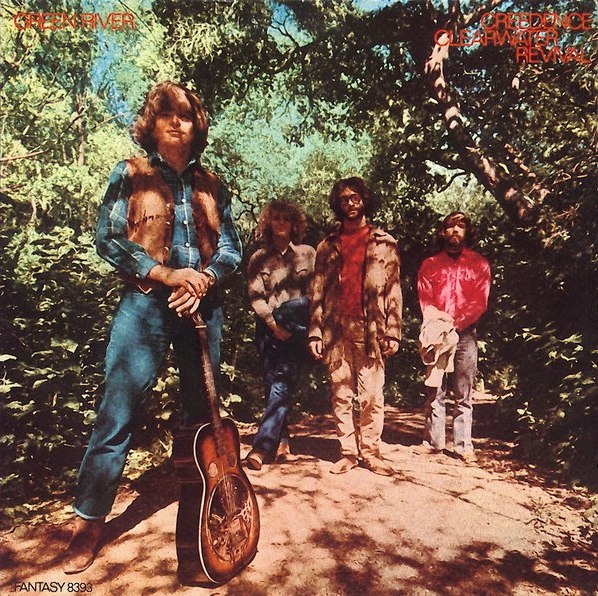
236
In my entry for “Proud Mary” (#354), I commented about John Fogerty’s innate ability to craft songs that felt as if they had always existed. This standout from Green River – the band’s first of three (!) 1969 albums – is another prime example of Fogerty’s ability to tap into the deep well of Americana with an original, but instantly timeless, song.
“Bad Moon Rising” is vague in its ominous depictions, but taken within the context of 1969 – a peak of the American presence in Vietnam, the aftermath of shocking domestic violence, and the inauguration of Richard Nixon – the song presents as both of its time and beyond its time. That it’s delivered in a tune that could have easily emerged from a pre-war southern bayou only adds to its immense appeal.
The ubiquity of Creedence – and the easy appeal of the band’s best-known songs – seems to undermine the adept social commentary that served as an undercurrent to their greatest work. “Bad Moon Rising” is a sing-along, for sure, but its message was a stirring portent of troubled times to come.

235
While one can expend a great deal of energy discussing the technical achievements of the title track to John Coltrane’s 1960 album Giant Steps, it remains a simply remarkable listening experience – sixty years after its initial arrival. That it stands as one of the celebrated saxophonist’s most enjoyable tracks is merely icing on the cake.
Built around a complex – and ever-shifting – patten of chord changes, “Giant Steps” makes for a surprisingly easy listen. As a delivery for one of Trane’s most notable solo features – and a much-discussed and debated solo from pianist Tommy Flanagan – the track is appealing to both jazz novices and scholars.
Ultimately, “Giant Steps” helped to usher in the most fascinating era of Coltrane’s career. For the remaining seven years of his life, Trane would remain in a highly exploratory mode – one that matched his technical prowess with a quest to unlock the spiritual potential of jazz music. “Giant Steps” arrived at a perfect point of equilibrium – one that found him equally experimental and accessible.
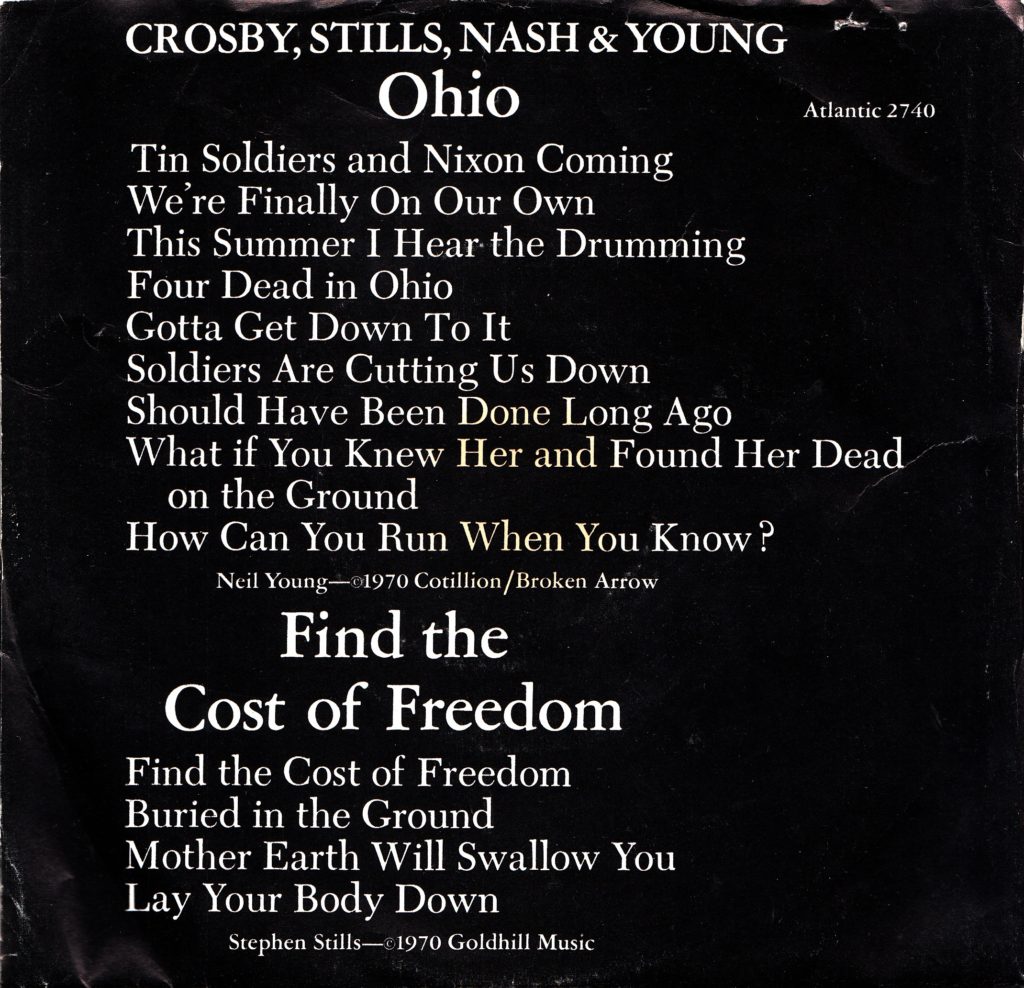
234
Recorded less than three weeks after the tragic death of four students at Kent State University, “Ohio” was a scathing indictment of Richard Nixon’s “law and order” approach to civil unrest. Seething with the immediacy of the moment, it remains one of the most powerful protest songs in the history of American popular music.
Neil Young was moved to write “Ohio” after viewing photographs of the incident – particularly John Filo’s Pulitzer Prize-winning image of fourteen-year-old Mary Ann Vecchio kneeling over the body of twenty-year-old Jeffrey Miller. His lyrics captured the excitement of young college students “finally on our own,” only to be struck down in a shocking act of violence.
“Ohio” was arguably the least coded protest song to ever become a mainstay on rock radio. The blunt, matter-of-fact lyrics, the raw emotion of the music, and Young’s bold decision to call out Nixon by name made the song impossible to ignore. Though intrinsically tied to its own turbulent times, the sentiment of “Ohio” remains both relevant and striking.

233
Written by Ellie Greenwich and Jeff Barry, “Leader of the Pack” represents the peak of the “teenage death song” mini-genre that proved surprisingly successful during the late-fifties and early-sixties. Its melodrama was a perfect match for The Shangri-Las, who had recently scored their first hit with “Remember (Walking in the Sand)” (#842).
There’s a goofiness to “Leader of the Pack” that is forgivable, given its target audience (I for one have always been amused that the song’s narrator, Betty, met the bad boy, Jimmy, “at the candy store”). However, buried within the song’s campiness is a remarkable combination of composition, production, and performance. Expanding upon the sound effects that had made “Remember” a novel production, “Leader of the Pack” is given an almost cinematic level of drama with its roaring engine, screeching tires, and climactic crash.
Pandering to the dark impulses of a teenage audience has proven to be a remarkably durable strategy for success, and naturally, “Leader of the Pack” raced to the top of the American charts in late 1964. However, few pop singles of the era matched the song’s level of novelty and craftsmanship.
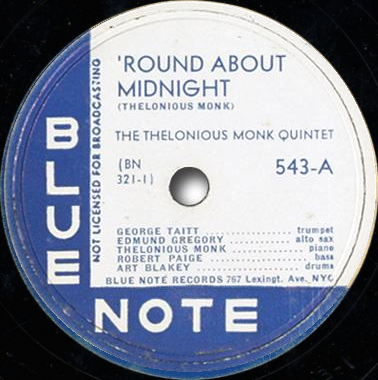
232
Despite his relatively limited number of songwriting credits, Thelonious Monk managed to carve out one of the most lasting and rewarding catalogs in the history of jazz music. Monk revisited his greatest compositions in a seemingly-endless number of approaches that – as evidenced by a continual stream of new releases, such as the recent Palo Alto set – proved the brilliance and durability of his craftsmanship.
Monk’s greatest composition was also one of his first. Written in the early forties – though some scholars argue that Monk may have been kicking around an embryonic version of the song years before – “‘Round Midnight” would eventually become his signature piece. Recorded more than any other jazz standard, the song would, in time, be given readings by the likes of Charlie Parker, Bud Powell, Dizzy Gillespie, Wes Montgomery, Sun Ra, Julie London, Grant Green, Bill Evans, Sarah Vaughan, and Miles Davis – who made it the title track of his 1957 debut for Columbia Records.
Despite the volume of covers, and a plethora of notable recordings by Monk himself, it’s his original 1948 single for Blue Note that reigns supreme. Joined by a small combo that included George Taitt (trumpet), Sahib Shihab (alto sax), Robert Paige (bass), and Art Blakey (drums), Monk gives the song a sparse, downcast feel that perfectly invokes the nocturnal images of its title. It’s a singular moment in a remarkable body of work from a true American original.

231
Poor Donovan is often viewed as a second-rate Dylan, and a psych lightweight, but the Scottish singer-songwriter authored an impressive number of hit singles, while also producing several albums of considerable depth. His greatest moment on record, “Sunshine Superman” is one of the finest pieces of psychedelic pop to ever hit the airwaves.
Recorded in late-1965, “Sunshine Superman” was conceived while The Beatles were still putting the finishing touches on Rubber Soul – a masterful album, no doubt, but hardly “psych.” In fact, its recording closely corresponded with that of The 13th Floor Elevators’ epochal “You’re Gonna Miss Me” (#461) – considered by many to be the first true psychedelic single. Due to a lengthy delay in the song’s release – July 1966 in the U.S., and December 1966 in the UK – contemporary listeners were given the inaccurate impression that Donovan was merely riding on the coattails of The Beatles’ true foray into psychedelia, Revolver.
That matter of months may seem insignificant now, but in the highly-competitive pop landscape of the mid-sixties, it meant the difference in being seen as an innovator or an also-ran among serious listeners. However, “Sunshine Superman” was both a novel work of production by Mickie Most, and a stellar piece of songwriting by Donovan. When paired with innovative contributions from a talented cast of musicians (including a pre-Led Zeppelin Jimmy Page and John Paul Jones), the song took on a life of its own. It remains one of the most refreshingly appealing singles from rock music’s most innovative era.
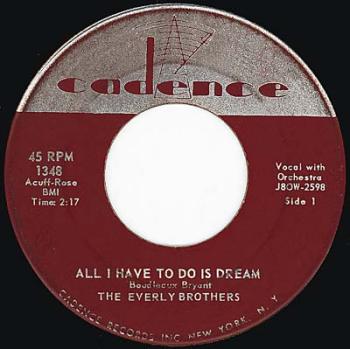
230
The Everly Brothers hit the big time in 1957 with their massive back-to-back singles, “Bye Bye Love” (#591) and “Wake Up Little Susie.” Despite the charmingly upbeat nature of those breakthrough rockabilly hits, the vocal duo would truly hit their peak with this stellar 1958 ballad.
Penned by Boudleaux Bryant – who had co-written “Bye Bye Love” with his wife, Felice – “All I Have to Do Is Dream” is an impossibly romantic track, and a perfect showcase for the close harmonies of Phil and Don Everly. The featherweight arrangement – highlighted by the beautiful tremolo guitar of Chet Atkins – adeptly straddles the line between the brothers’ country background and pop ambitions, and matches the “dreaminess” of the song’s lyrics.
“All I Have to Do Is Dream” stands among the most wistful and ethereal tracks from rock & roll’s golden age. The timeless appeal of its gorgeous melody has ultimately made it one of the most enduring songs in the pop music canon.
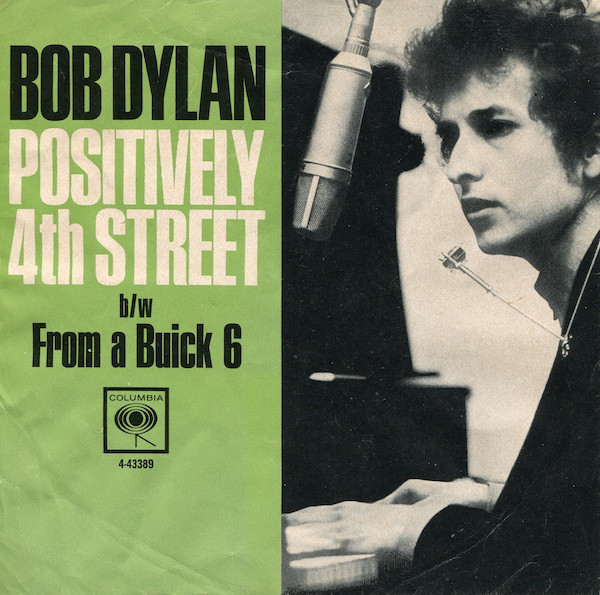
229
Released just two months after “Like a Rolling Stone” – gonna have to wait a while for that one – “Positively 4th Street” was Bob Dylan’s other great tell-off song from the sessions for Highway 61 Revisited. While less steeped in allegorical imagery than its predecessor, “4th Street” is every bit its match in terms of vitriol and melodicism.
As is the case with all of the Highway 61-era material, “4th Street” bounces with the charm of the ramshackle blues group that Dylan assembled to achieve his “thin wild mercury” vision. Once again – as on “Rolling Stone” – it’s the Hammond organ work of the largely-untrained Al Kooper that stands out as the song’s musical signature.
Highway 61 Revisited found Dylan in the middle of an amphetamine-fueled sweet spot – one that saw him still nursing the wounds of his infamous disassociation with the folk scene from which he had emerged just a few years prior. Speculation abounds as to the target of Dylan’s rancor in “Positively 4th Street,” but his pointed lyrical jabs are stinging, nevertheless.

228
The sprawling centerpiece to Panda Bear’s 2007 album Person Pitch, “Bros” finds the Animal Collective member – aka Noah Lennox – crafting the most meticulously gorgeous track of his career. An enchanting mix of samples, found sounds, live instrumentation, and Lennox’s reverberated vocals, the track is both alien and familiar at the same time.
Built primarily around a pair of samples from The Tornados (“Red Roses and a Sky of Blue”) and Cat Stevens (“I’ve Found a Love”), “Bros” further mines the folk, rock, and electronic influences of Lennox’s work with Animal Collective. Taking on that project’s early penchant for experimentation and balancing its turn in a more melodic direction, “Bros” sounded like little released before, but has been frequently mimicked since.
At over twelve minutes, “Bros” has an imposing length, but its gentle breeziness, rich melodicism, and lush arrangement make it nothing short of enthralling. Rarely has a song more perfectly found a more comfortable sounding middle ground between experimentation and accessibility.
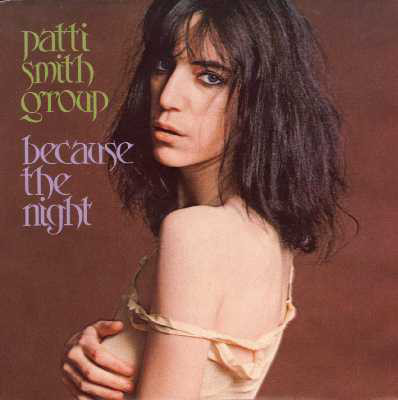
227
Initially conceived by Bruce Springsteen – and later a hit for 10,000 Maniacs – “Because the Night” found its ideal state in the hands of punk poet Patti Smith. Taking Springsteen’s rough sketch of a demo, Smith completed the song’s lyrics, upped its anthemic power, and scored the biggest hit of her career in the process.
While Smith and Springsteen may have seemed like an odd pair of collaborators, the two were linked by Jimmy Iovine – who, at the time, was working on Springsteen’s Darkness on the Edge of Town and Smith’s Easter. Unconvinced of the song’s potential – and hoarding a massive clutch of material – Springsteen was willing to turn “Because the Night” over to an artist who had achieved critical acclaim, but little commercial success.
Smith’s lyrics and vocal performance gave the song a powerful sense of desperation, and her band lent Springsteen’s original composition an immediacy befitting of their punk credentials. While Smith and Springsteen never worked together directly on “Because the Night,” its fully realized end result stands as one of the highlights of either artist’s career.
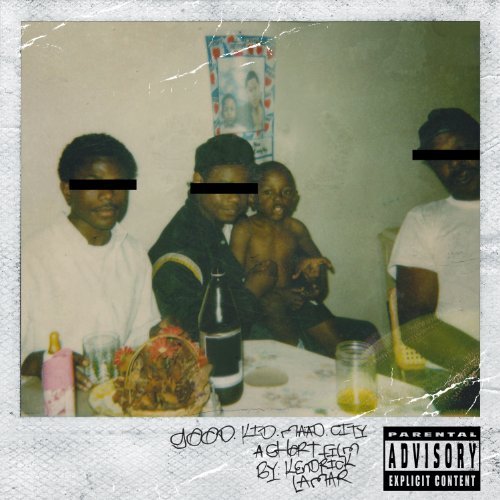
226
2011’s Section.80 brought Kendrick Lamar his first taste of success, but it was his follow-up, 2012’s good kid, m.A.A.d city, that truly established the Compton rapper as one of the most gifted artists of his generation. A sprawling, conceptual song-cycle, good kid possesses a cinematic quality that reaches its apex in the album’s stunning climax.
Split into two distinct halves, “Sing About Me, I’m Dying of Thirst” may not be the most immediate (or representative) track from good kid, but it is the one that best displays the range of Kendrick’s abilities as a storyteller. A touching tribute to fallen acquaintances, “Sing About Me” stands as the record’s emotional peak, while the rushed intensity of “I’m Dying of Thirst” brings the album’s spiritual themes to an impactful resolution.
With his 2015 masterpiece To Pimp a Butterfly, Kendrick Lamar proved that he was the only contemporary hip-hop artist that could top good kid, m.A.A.d city. While both albums are best taken as the conceptual wholes that they were intended, each is the sum of several remarkable parts. This is one of the very best of those parts.
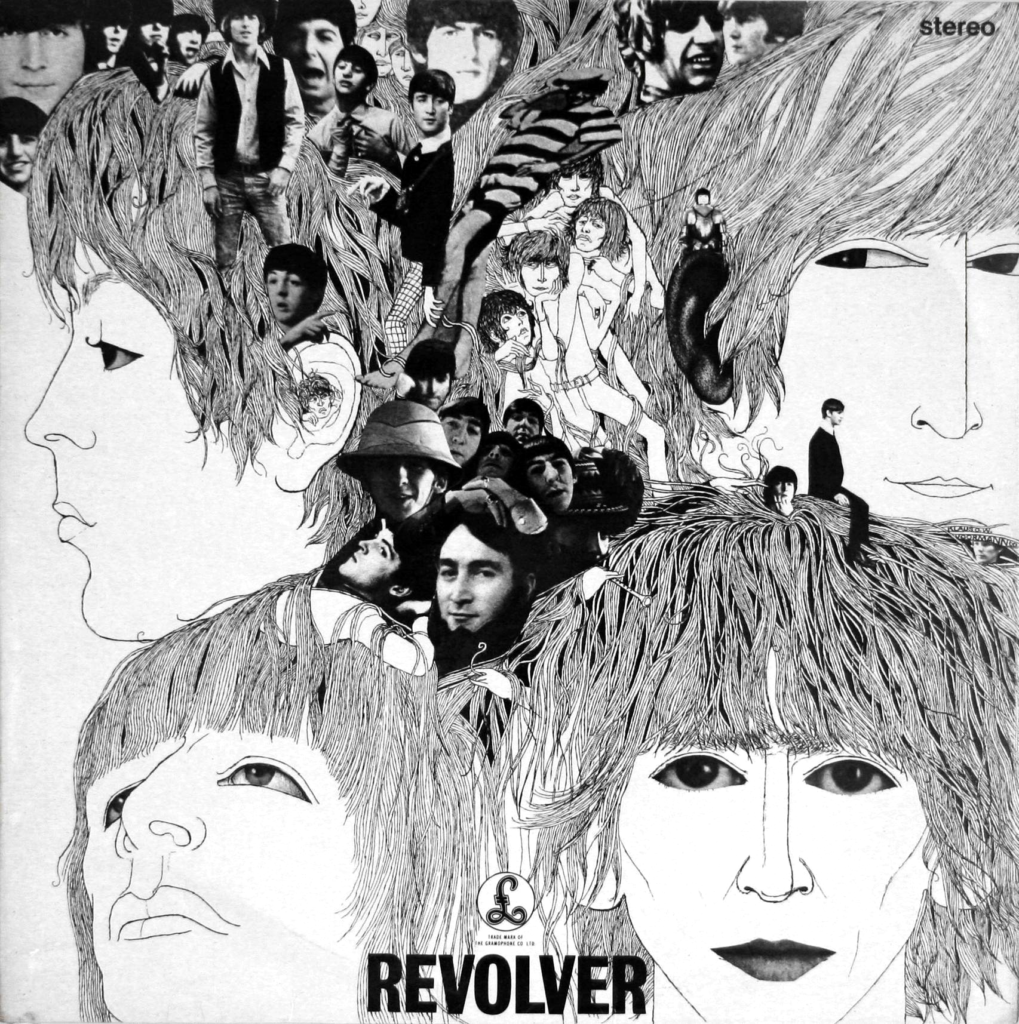
225
While 1965’s Rubber Soul was an unqualified masterpiece, it was on the album’s follow-up that The Beatles really flipped the script, turning in a record that was unprecedented in both its musical range and depth. A relative calm at the center of the storm, Paul McCartney’s dazzling “For No One” arguably stands as the band’s most underrated song.
Featuring only McCartney, Ringo Starr, and a french horn solo by the uncredited Alan Civil, “For No One” is a sparse slice of baroque pop – one that stands in contrast to the technicolor arrangements of the surrounding songs. The musical simplicity forces attention upon McCartney’s lovelorn lyrics and striking vocal performance.
In a brief fifteen lines of verse, McCartney sketches out an impossibly vivid picture of a doomed and dying relationship, all set to one of the most gorgeous melodies in The Beatles’ catalog. Its chorus brings no resolution, only more sorrow. While McCartney would eventually – somewhat justifiably – be accused of writing songs about “boring people doing boring things,” that is certainly not the case with “For No One.” Its sentiment is universal, poignant, and utterly heartbreaking.
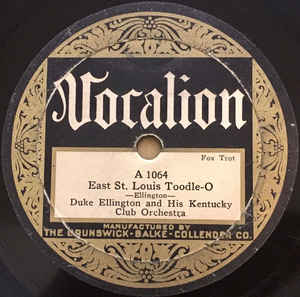
224
Duke Ellington’s orchestra took up residency at Harlem’s famous Cotton Club in 1927. Ellington’s personal grace and artistic brilliance would endear him to the club’s exclusively white audience, and in a way, he would do as much to break down the barriers between Black and white as any politician, activist, or writer of the time.
Just months earlier, Ellington had recorded this track – his most stirring and accomplished composition to date. Released on the Vocalion label – and credited to Duke Ellington and His Kentucky Club Orchestra – the promotion of “East St. Louis Toodle-O” belied the slick, decidedly-metropolitan sophistication of Ellington’s increasingly complex sound.
That sophistication was well served by the confines of the Cotton Club’s thrilling prohibition-era nightlife. Though the club’s entertainment was often derisively referred to as “jungle music,” no one could rightfully claim that anything less than genius emanated from Duke’s stage.
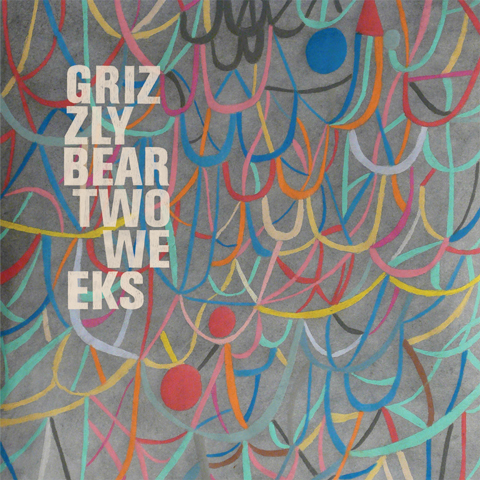
223
Grizzly Bear’s finest moment, the first single from the Brooklyn band’s outstanding Veckatimest, arrived at the tail end of the 2000s, but it harkens back to the golden age of baroque pop. Taking the album’s lush arrangements and meticulous eye for detail, and matching them with irresistible hooks, “Two Weeks” is one of the best singles of its time.
Built upon Daniel Rossen’s staccato electric piano chords, “Two Weeks” features a soaring lead vocal from bandleader Ed Droste, and ravishing harmonies from the rest of the group. The band’s perennially underrated rhythm section of Chris Taylor (bass) and Christopher Bear (drums) bring a subtle heft to the track, providing an effective counterbalance to its considerable melodic strengths.
While Grizzly Bear had largely avoided such straightforward songcraft in their earlier work – namely 2006’s widely acclaimed Yellow House – the clarity and charm of “Two Weeks” was nothing short of stunning. It stands as one of the finest examples of indie rock’s 2000s-era brush with the mainstream.
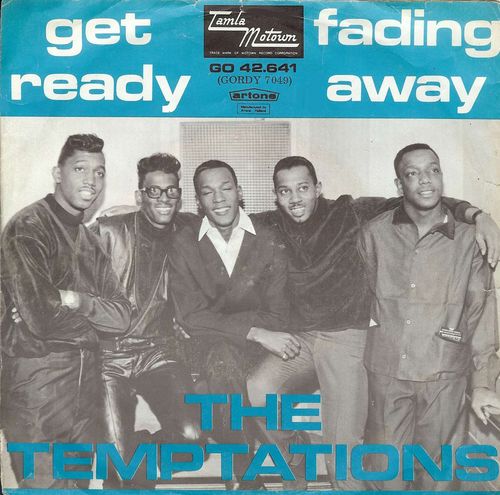
222
Among The Temptations’ greatest singles, “Get Ready” wasn’t actually one of the group’s biggest hits. While it reached a respectable #29 on the American charts – and briefly glanced the top ten in Britain – “Get Ready” was, in its own time, overshadowed by several other tracks in the quintet’s catalog.
I’ve mentioned the extraordinary contributions of Motown’s house band, The Funk Brothers, in multiple entries on this list, but they’re going to be the focal point of this one. As good as Eddie Kendricks’ lead falsetto performance is, it’s the rhythm section that truly steals the show in “Get Ready.” Echoing the clarion call of the song’s title, Benny Benjamin’s drums are pushed to the forefront of the mix – practically leaping from the speakers every time he hits a fill. Equally impressive is the work of the incomparable bassist, James Jamerson – particularly in the ascending line that gives the song’s pounding chorus a powerful immediacy.
“Get Ready” showed the influence that rock music began to have on the “Motown sound” by the mid-sixties – repayment, perhaps, for the foundational impact that Motown had laid for groups like The Beatles and The Rolling Stones. “Get Ready” was stirring proof that The Funk Brothers could out-rock virtually any of their contemporaries.
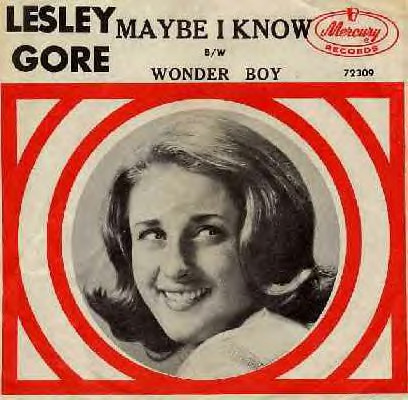
221
While its familiarity is surpassed by “It’s My Party,” and its social importance is eclipsed by “You Don’t Own Me” (#907), “Maybe I Know” is easily my favorite single from Lesley Gore. A fantastic example of the mid-sixties girl-group sound, Gore lends a commanding performance to a song that gives a striking account of a troubled relationship.
Another Jeff Barry/Ellie Greenwich composition – produced by Quincy Jones – “Maybe I Know” is a surprisingly complex piece of songwriting for a mid-sixties pop hit. Its minor key pronunciations are embellished by the song’s wall of backing harmonies, and counterbalanced by its relatively-jaunty tempo. These competing musical impulses reflect Gore’s stern commitment to a relationship that she knows she’s being mistreated in, and it doesn’t take a gigantic leap of the imagination to find an even more sinister message hidden between the lines.
Throughout this project, I’ve been wholly transparent about both my fondness for girl group music and the idea that no song is in a set place until it appears on the list. “Maybe I Know” was always a no-brainer for inclusion, but it has moved up at least a couple of hundred spots from its original estimated placement. I had hoped that its run might bring it into the venerated inner circle of the top 200 tracks, but ultimately, it fell just a bit short.

